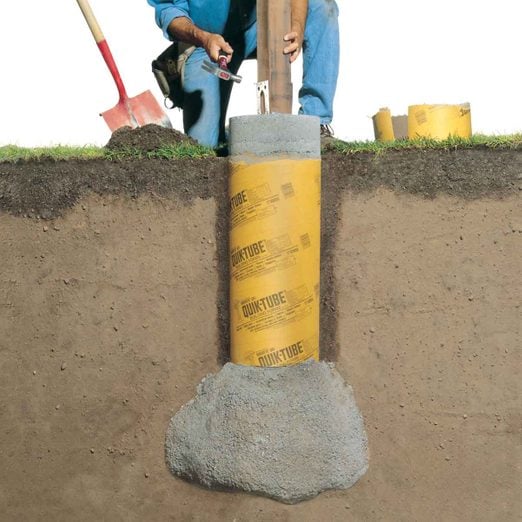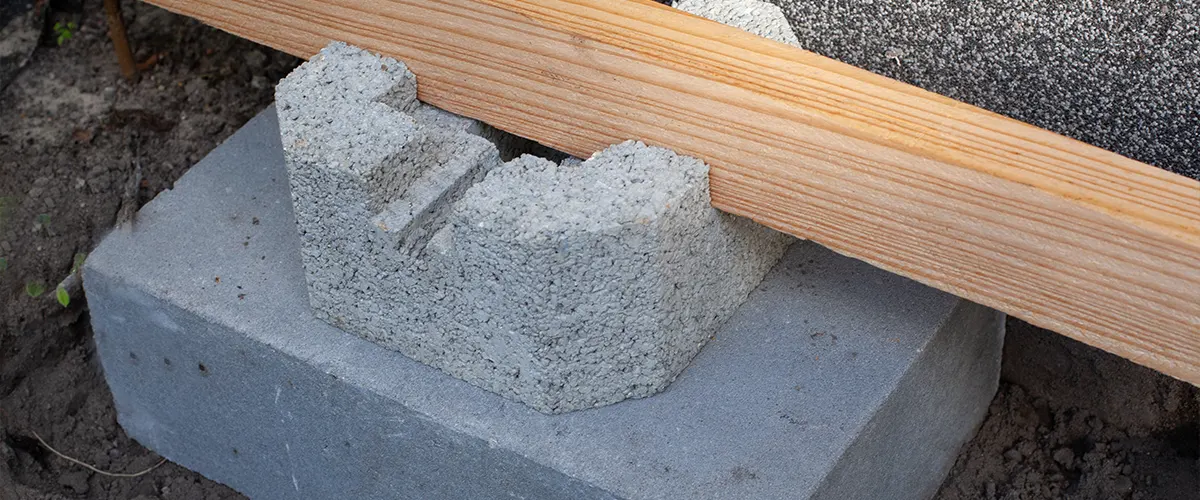Engineered for Success: The Scientific Research Behind Robust and Durable Deck Footings
Engineered for Success: The Scientific Research Behind Robust and Durable Deck Footings
Blog Article
Choosing the Right Deck Footings for Stability and Toughness
The longevity and safety of your deck depend heavily on the type of footings you pick, as they offer the necessary assistance and security to hold up against the test of time. In this conversation, we will discover the numerous types of deck footings, think about the important variables to consider when making a decision, and delve into the pros and disadvantages of different options.
Types of Deck Footings
There are numerous sorts of deck footings that can be made use of, each offering special advantages and considerations. One common kind of ground is the concrete pier ground. These grounds include a round opening filled with concrete, which provides a strong structure for the deck posts. Concrete pier grounds are reasonably easy to install and supply excellent security, making them a prominent selection for several deck projects.
These footings are set up by screwing them right into the ground, which produces a safe and secure foundation for the deck. They additionally enable for simple modification and progressing of the deck if needed.
Alternatively, some home builders decide for precast concrete grounds. These grounds are constructed from durable concrete and come in numerous sizes and shapes to accommodate various deck designs. Precast concrete grounds are hassle-free to mount and supply a secure base for the deck framework.
Lastly, an additional choice is the post-in-anchor footing system. This kind of ground entails driving a metal anchor into the ground and affixing it to the deck post. It supplies adaptability in terms of placing the deck posts and appropriates for decks with light-weight frameworks.
When selecting the right type of deck ground, it is necessary to consider elements such as soil problems, deck load, and local structure codes (Deck Footings). Consulting with a specialist service provider or structural designer can aid make sure the appropriate footing is chosen for a steady and safe deck
Aspects to Consider When Choosing Grounds
When choosing the ideal grounds for a deck, it is critical to meticulously consider numerous factors such as soil conditions, deck load, and adherence to regional building ordinance. These elements play a substantial duty in guaranteeing the stability and durability of the deck framework.
The type of soil on which the deck will certainly be developed identifies the kind of grounds called for. On the other hand, decks constructed on clay or large soils may call for grounds that can fit the soil's tendency to broaden and contract.
An additional vital aspect is the deck tons. The weight of the deck, consisting of the materials used and any kind of prospective real-time loads such as furniture or celebrations, have to be thought about when selecting footings. The footings need to be created to birth the weight of the deck and distribute it equally to prevent any kind of structural issues or failings.
Lastly, adherence to regional building ordinance is vital. Structure codes differ from region to region, and it is necessary to comply with the specific requirements set by the regional authorities. Deck Footings. These codes guarantee that the deck is built securely and fulfills the necessary criteria for structural integrity and load-bearing capacity
Concrete Grounds: Pros and Cons

When utilized as the foundation for a deck,Concrete More hints footings offer several benefits and disadvantages. On the positive side, concrete grounds supply outstanding stability and sturdiness. Concrete is a stiff and strong product that can support hefty lots and withstand various weather conditions. It additionally has a long lifespan, making it a trusted selection for long-lasting usage.
One more benefit of concrete grounds is their versatility. They can be put right into different forms and sizes to suit different deck styles and setups. Concrete footings can be customized to fit the specific requirements and demands of the deck structure.
However, there are likewise some downsides to using concrete grounds. This can increase the overall cost of the deck project and might need professional assistance.

Helical Piers Vs. Sonotubes: Which Is Better?
In taking into consideration the structure choices for a deck, the contrast in between helical piers and sonotubes is essential in identifying the remarkable choice. Helical piers, additionally called screw heaps, go to this website are steel shafts with helical plates connected to them. They are turned right into the ground making use of hydraulic machinery, providing a sturdy and steady structure for the deck. On the other hand, sonotubes are round forms constructed from cardboard or fiber material that are filled with concrete. They are placed in a hole went into the ground and supply support for the deck.
The helical plates on the piers produce a strong hold with the soil, changing or avoiding any movement of the deck. Sonotubes, on the various other hand, rely entirely on the concrete loading for security, which might not offer the very same level of strength and resistance.
In regards to installment, helical piers are fairly simpler and faster to install compared to sonotubes. The hydraulic machinery used to turn the piers right into the ground makes certain a efficient and quick process. Sonotubes, on the other hand, need digging holes and putting concrete, which can be labor-intensive and time-consuming.
Additionally, helical piers are a more versatile option. They can be used in numerous dirt problems and can be adjusted or strengthened if needed. Sonotubes, on the other hand, may require extra support, such as rebar, in specific soil conditions or areas with high lots requirements.
Selecting the Right Footings for Your Deck's Measurements
For ideal structural honesty, it is important to thoroughly select the suitable footings that line up with the dimensions of your deck. The measurements of your deck, including its elevation, size, and size, play a substantial role in identifying the kind and dimension of footings required.
When picking footings for your deck, it is essential to take into consideration the load-bearing capability of the dirt. The weight Related Site of the deck, incorporated with the weight of any furniture or individuals on it, exerts a significant pressure on the grounds (Deck Footings). Therefore, it is crucial to choose footings that can appropriately support this weight without moving or sinking gradually.
The shapes and size of the footings must additionally be considered. Larger decks with better measurements call for bigger grounds to offer enough security and assistance. The shape of the grounds, whether they are square or rounded, depends on the design and layout of the deck. Furthermore, the deepness at which the footings are installed must be identified based upon the frost line in your region to avoid any kind of heaving or shifting due to freezing temperatures.
Verdict
In verdict, picking the appropriate deck footings is vital for guaranteeing stability and resilience. Variables such as the kind of grounds, the deck's dimensions, and the pros and cons of different alternatives need to be taken into consideration.
These footings consist of a cylindrical hole loaded with concrete, which supplies a solid structure for the deck blog posts. Concrete pier footings are relatively simple to install and provide exceptional security, making them a preferred option for lots of deck projects.
Precast concrete footings are hassle-free to install and offer a steady base for the deck structure.
It supplies flexibility in terms of positioning the deck blog posts and is appropriate for decks with lightweight frameworks.
Concrete footings use several advantages and disadvantages when utilized as the structure for a deck.
Report this page